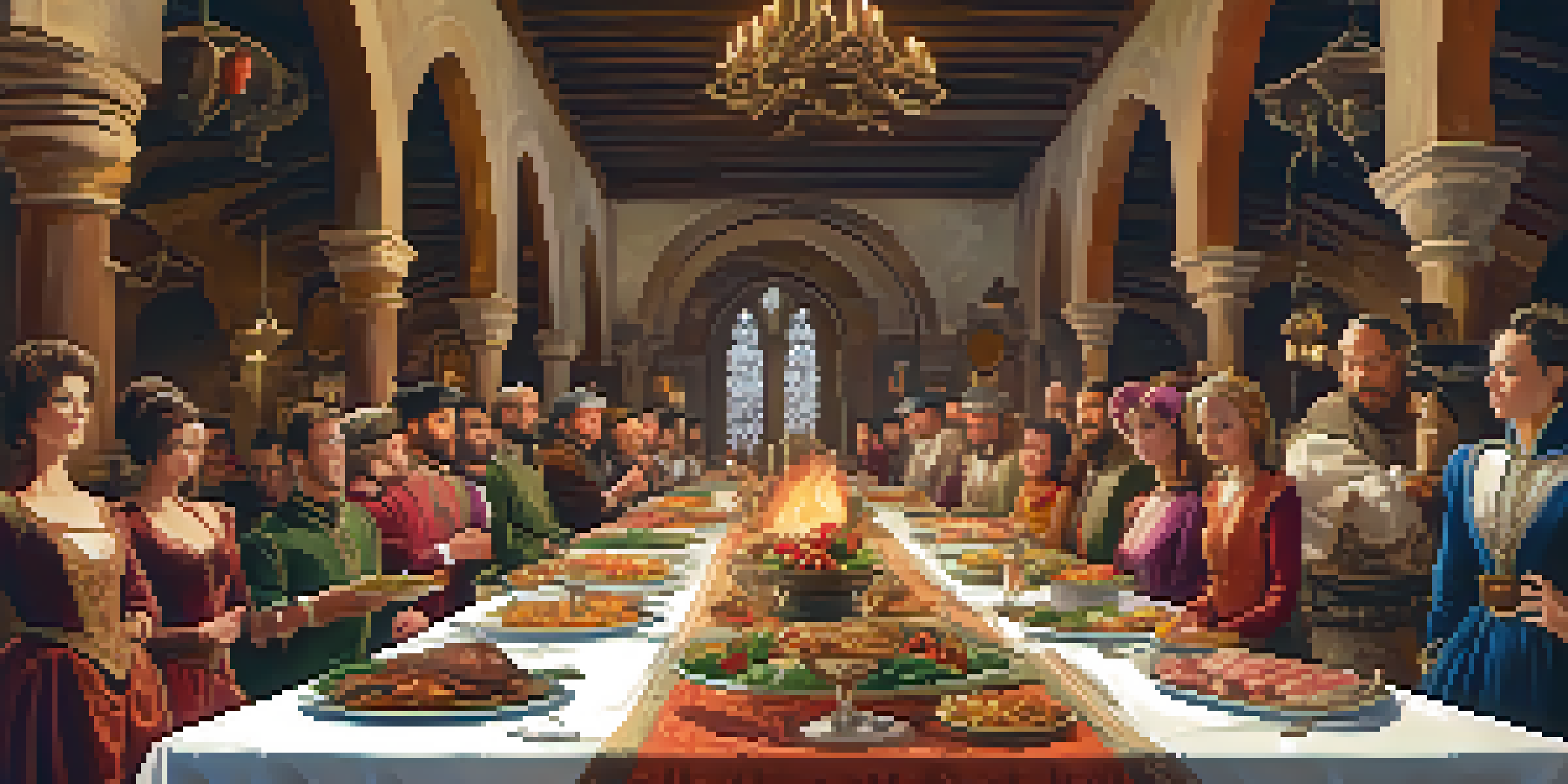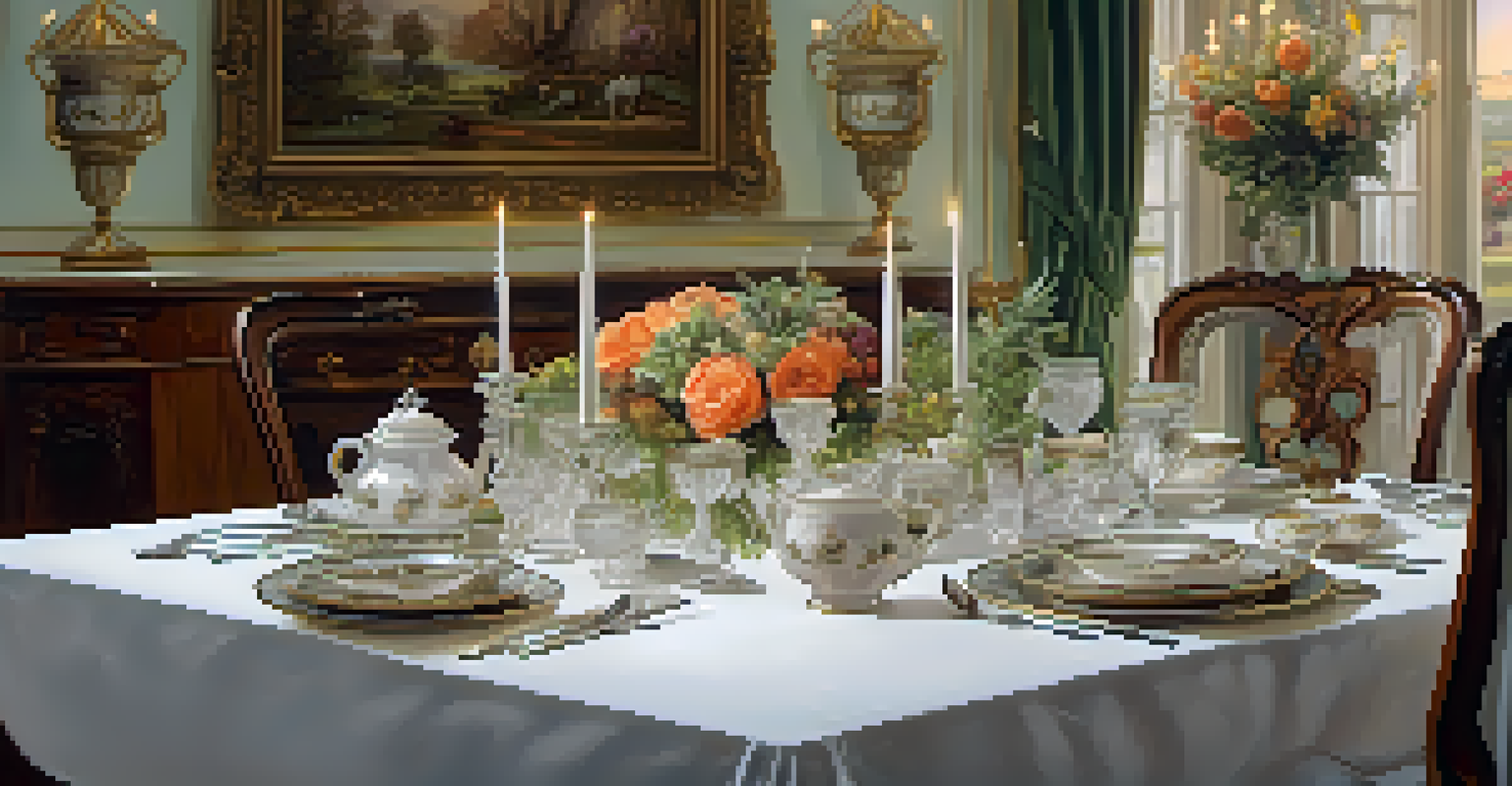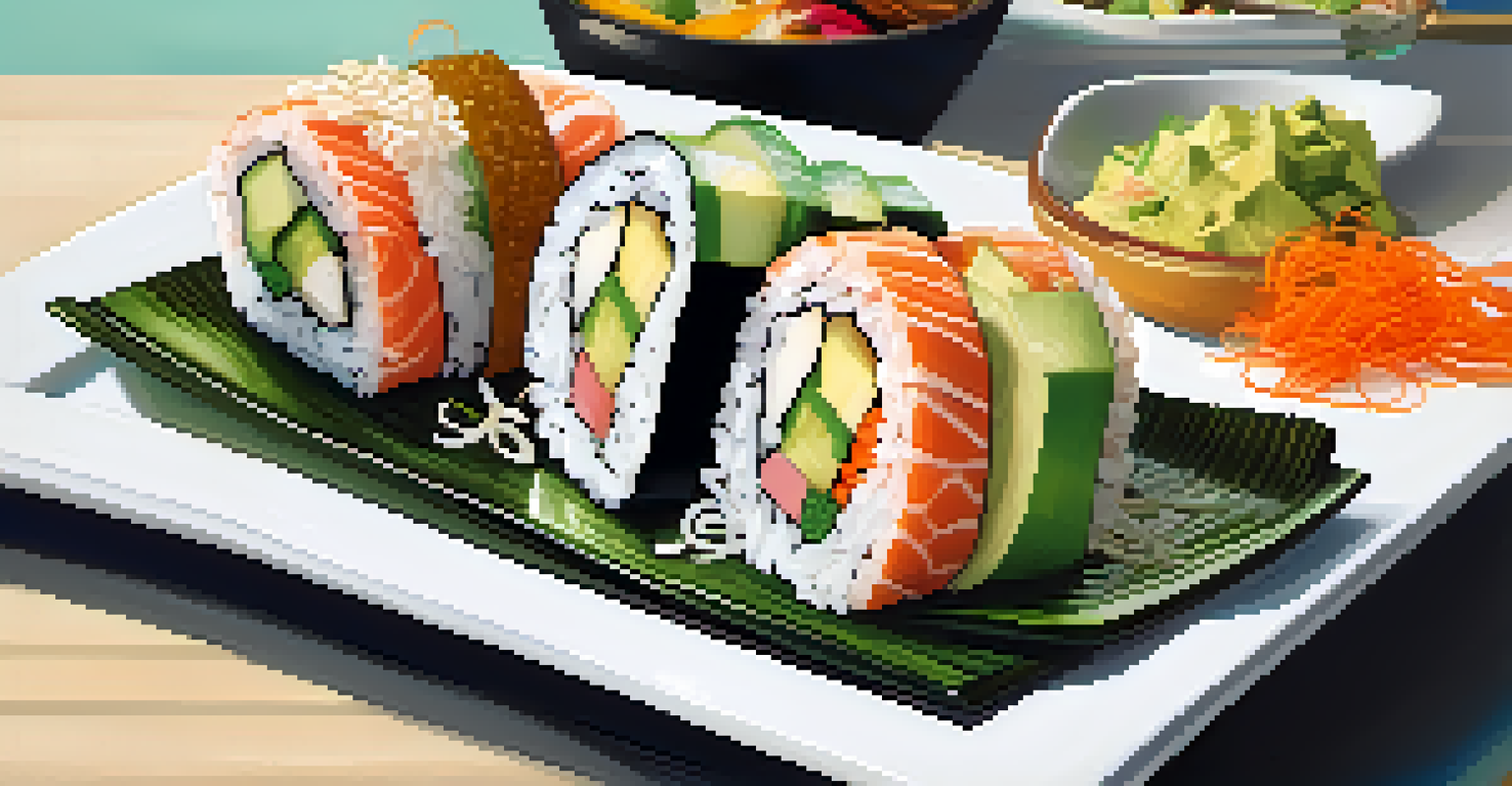Historical Dining: Meals Inspired by Past Eras

The Origins of Historical Dining: A Culinary Time Machine
Historical dining invites us to embark on a culinary journey through time. It allows us to experience the flavors and traditions of various eras, from ancient Rome to the Middle Ages. By recreating authentic meals from these times, we gain insight into the culture, ingredients, and cooking techniques that shaped history.
Food is our common ground, a universal experience.
Imagine sitting down to a feast that echoes the grandeur of a royal banquet or a simple gathering at a peasant's table. Each dish tells a story, connecting us to the past and revealing how societal changes influenced what people ate. This exploration not only satisfies our taste buds but also enriches our understanding of history.
As we delve into historical dining, we can appreciate how food served as a reflection of societal status, available resources, and regional flavors. It’s fascinating to see how meals have evolved, influenced by trade, agriculture, and even politics, making every bite a connection to our shared human experience.
Medieval Feasts: A Look at Banquets and Everyday Meals
Medieval feasts were grand events, often hosted by nobility to showcase wealth and power. These banquets featured an elaborate spread of roasted meats, pies, and rich sauces, often accompanied by entertainment, such as jesters or musicians. While these lavish meals may seem extravagant, they were a way to reinforce social hierarchies.

On the other hand, the everyday meals of the medieval peasant were much simpler and depended heavily on the seasons. Staples like bread, porridge, and seasonal vegetables were common, illustrating the stark contrast between the classes. This duality in medieval dining teaches us about the social fabric of the time.
Culinary Time Travel Through History
Historical dining allows us to explore the flavors and traditions of various eras, enriching our understanding of culture and society.
By recreating medieval meals today, we not only celebrate this rich culinary heritage but also gain insights into the daily lives of people from that era. It’s a delicious way to remember the past, whether it's a festive gathering or a humble family dinner.
Renaissance Revelry: The Art of Dining in Style
The Renaissance period marked a significant shift in dining, as the focus turned to artistry and presentation. Meals became elaborate displays, with dishes designed to impress visually as well as tastefully. This era celebrated culinary creativity, introducing spices and ingredients from newly discovered lands.
Cooking is like love. It should be entered into with abandon or not at all.
Dining during the Renaissance was not just about eating; it was a social affair that brought people together. The introduction of forks and more sophisticated table settings transformed how meals were enjoyed, making them a true celebration of culture and refinement. It was a time when food was as much about pleasure as it was about nourishment.
Today, Renaissance-inspired dining continues to captivate us, encouraging us to appreciate the beauty in our meals. Whether hosting a themed dinner party or simply trying out a recipe from this era, we can savor the elegance and creativity that defined Renaissance dining.
Colonial Cuisine: A Blend of Cultures and Ingredients
Colonial cuisine is a fascinating fusion of indigenous ingredients and European cooking techniques. As settlers arrived in the New World, they adapted their recipes to utilize what was available, leading to unique dishes that reflected a blend of cultures. This culinary exchange laid the groundwork for many foods we enjoy today.
For example, ingredients like corn, beans, and squash were staples for Native Americans, while European settlers brought over spices, meats, and baking methods. The combination of these elements created a vibrant and diverse dining experience that showcased the rich tapestry of influences in colonial America.
Diverse Influences in Colonial Cuisine
Colonial cuisine showcases a blend of indigenous ingredients and European techniques, reflecting the cultural exchanges of the time.
Exploring colonial cuisine today can be a delightful adventure, inviting us to recreate dishes that tell the story of resilience and adaptation. By understanding these meals, we gain a deeper appreciation for the diverse cultural heritage that shapes our modern palate.
Victorian Dining: Etiquette and Elaborate Meals
Victorian dining was characterized by strict etiquette and multi-course meals that could last for hours. This era emphasized formality and presentation, with elaborate table settings and specific rules governing how to eat and behave during a meal. It was a reflection of the societal norms and values of the time.
Dishes often included intricate recipes featuring game, seafood, and seasonal vegetables, showcasing the era's culinary innovation. The Victorian table was not just a place to eat; it was a stage for social performance, where manners and decorum were paramount. Each meal was a chance to display social status and refinement.
Recreating a Victorian dining experience today can be both fun and educational. It allows us to explore the customs of the past while enjoying the flavors that were once reserved for the upper class. By understanding these traditions, we can appreciate the evolution of dining and the importance of social connection over a meal.
The Roaring Twenties: Jazz, Cocktails, and Culinary Trends
The Roaring Twenties brought about a culinary revolution, influenced by the vibrant culture of jazz and the rise of cocktail parties. This was a time of social change, where dining became more casual and adventurous, mirroring the spirit of the decade. Flavors became bolder, and exotic ingredients found their way into everyday meals.
Prohibition also played a significant role in shaping dining habits, leading to the popularity of speakeasies and creative cocktails. Food became an integral part of social gatherings, with dishes like deviled eggs and shrimp cocktails becoming staples at parties. The dining experience was transformed into a celebration of freedom and creativity.
Modern Fusion Cuisine Trends
Contemporary dining embraces fusion cuisine, combining elements from different cultures to create innovative dishes that honor historical influences.
Today, we can channel the energy of the Roaring Twenties by hosting our own themed parties, complete with jazz music and classic cocktails. Exploring the culinary trends of this era invites us to embrace the joy of dining and the importance of celebrating life's moments with friends and family.
Modern Interpretations: Fusion Cuisine and Historical Influence
In our contemporary dining scene, we see a fascinating blend of historical influences and modern culinary techniques. Fusion cuisine, which combines elements from different cultures, has become a popular way to pay homage to the past while creating something new and exciting. This trend reflects our globalized world and the accessibility of diverse ingredients.
For instance, dishes like sushi burritos or kimchi tacos showcase how culinary boundaries are blurred, allowing us to enjoy flavors from around the globe. These modern interpretations not only delight our taste buds but also serve as a reminder of the rich history that shapes our food culture today.

By experimenting with fusion cuisine, we can honor the past while embracing innovation. Cooking and dining become a canvas for creativity, where we can tell our own stories and share our experiences through the meals we prepare and enjoy.